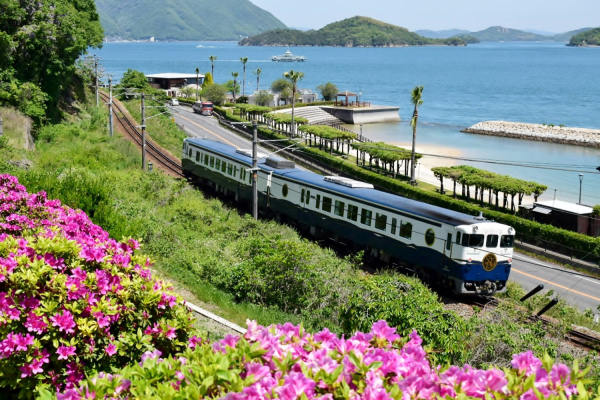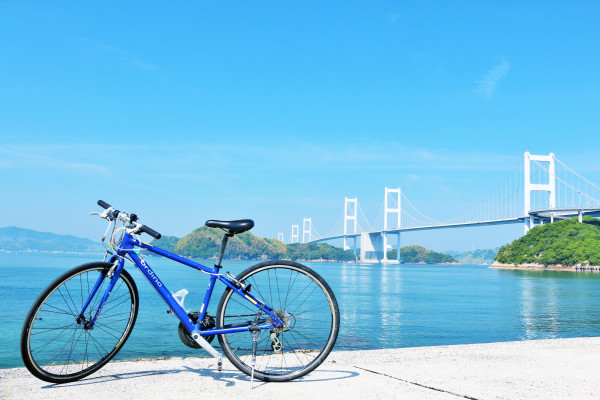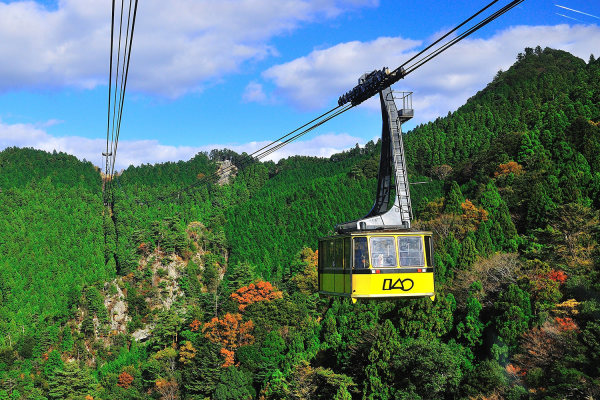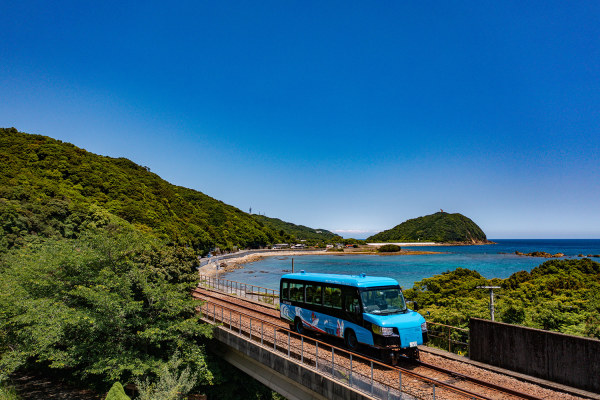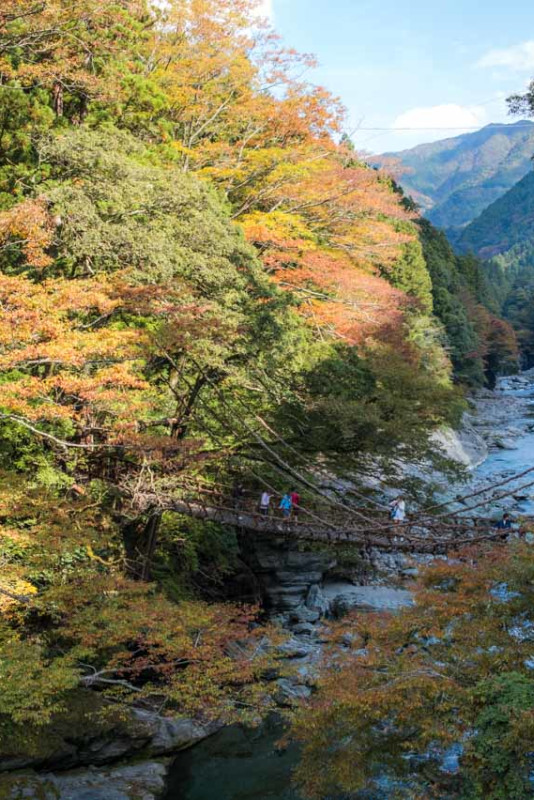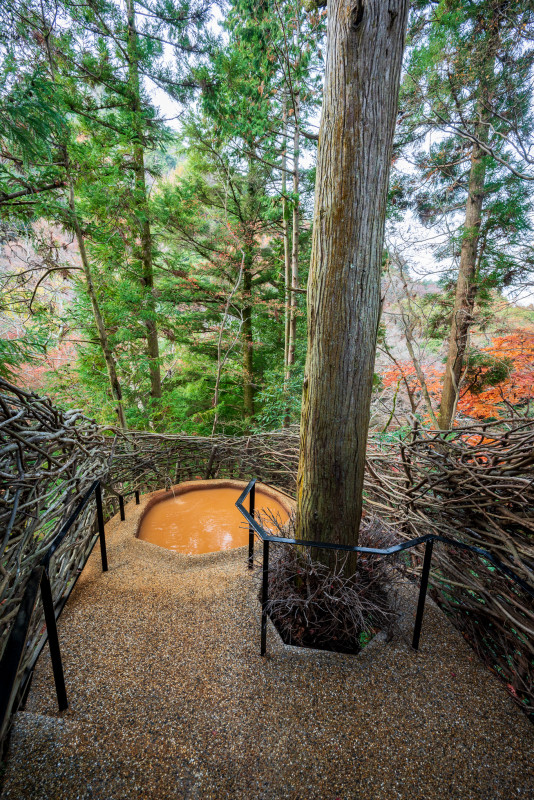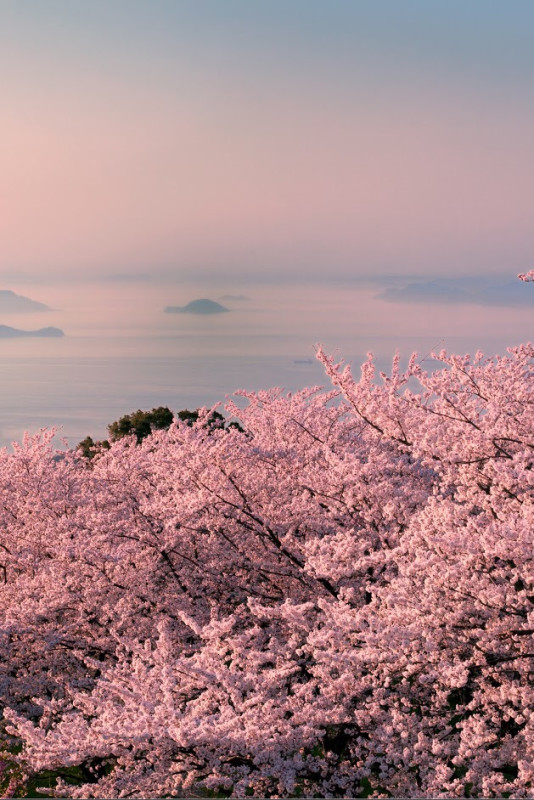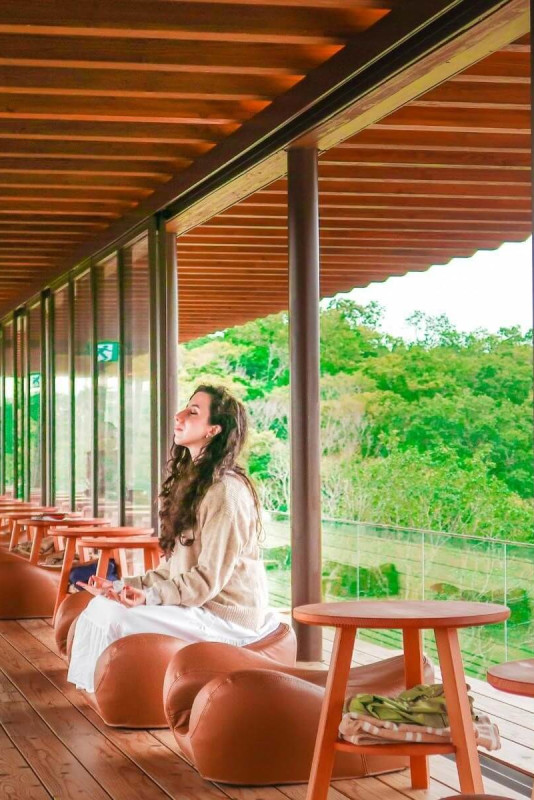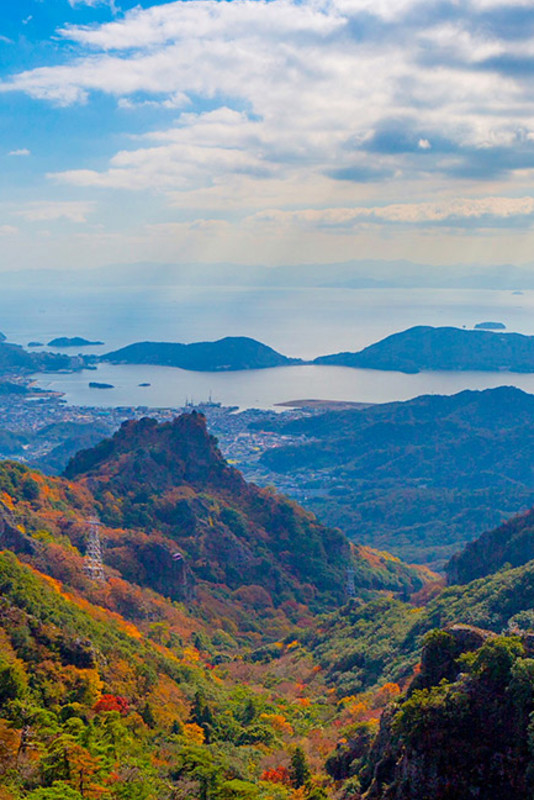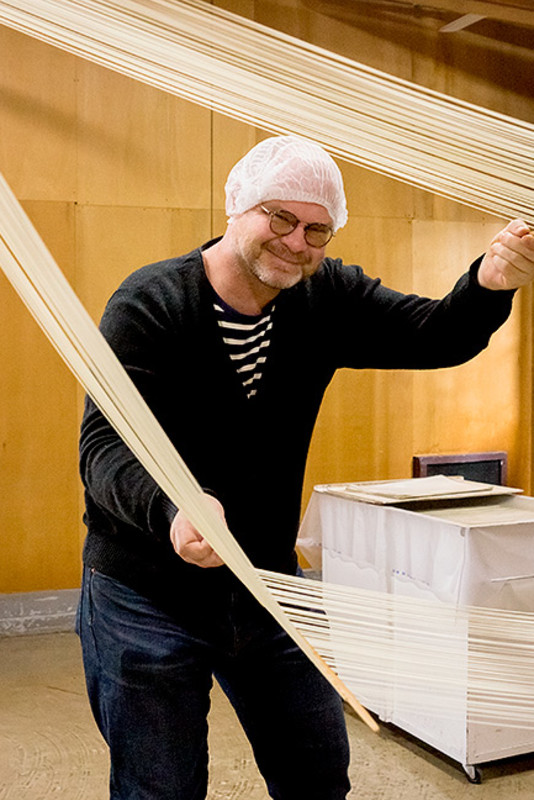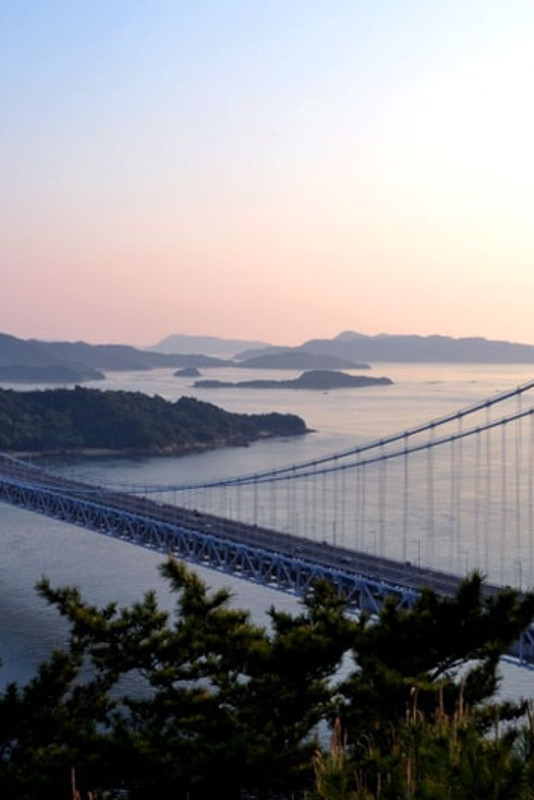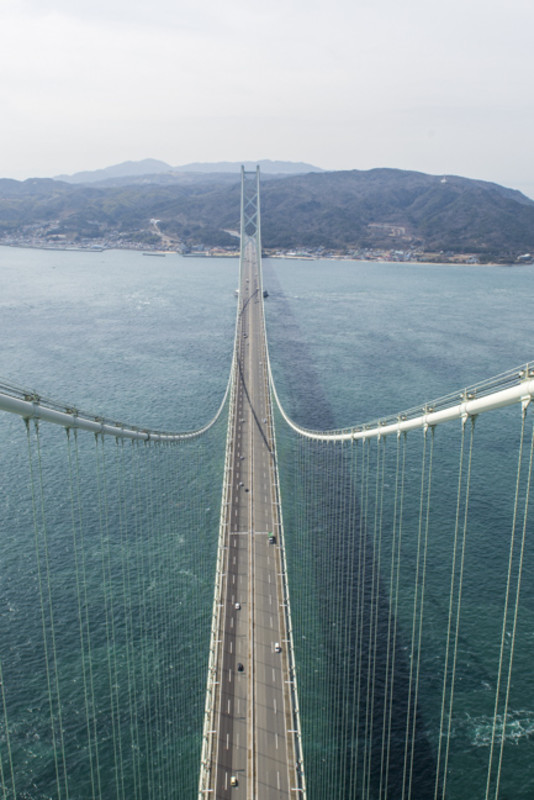Itineraries
Cycling the Shimanami Kaido - Close Up and Local in Rural Japan
Highlights
Before & After
To reach Onomichi City, take the Shinkansen to JR Shin-Onomichi Station and transfer to the local line heading to JR Onomichi Station.
Returning to Onomichi puts you on the Shinkansen eastbound line to Osaka and Tokyo, or westbound to Hiroshima and Fukuoka.

Cycling is an ideal way to travel the islands and coastlines of the Seto Inland Sea. The Shimanami Kaido route comes with a designated cycling lane and crosses 70 km of islands and bridges. It connects Onomichi on the mainland to Imabari and Shikoku in the south. This itinerary will take you on a journey through some of the finest scenery in the region. Breathe in the fresh sea air, climb on your bicycle, and set off on your voyage of discovery.
- Day 1
- Hiroshima
Onomichi U2
Hotel Cycle is a seven-minute walk from JR Onomichi Station and located inside the famous Onomichi U2 complex. The hotel was designed for cyclists. You can even check-in while still seated on your bike, and the rooms come with special wall attachments for your bicycle. The amenities, furnishings, and interior decorations inside the hotel are all made by local craftsmen or sourced locally. Inside the U2 complex, you’ll find a high-quality restaurant, bar, shops, and bakery, as well as a Giant cycle store. If you don’t want to bring your own bike, the Giant cycle store offer high-quality rentals.
※In this itinerary, you will return the rented bicycle to the Giant cycle store in Imabari located inside JR Imabari Station. (Advanced reservation is required when returning a bicycle in this manner — please check with the Giant store for details).
Shimanami Rental Cycle
You also have the option to rent standard bicycles at Shimanami Rental Cycle. The service station for Shimanami Rental Cycle is five minutes away from JR Onomichi Station, located in the Ekimae Harbor Parking (next to Onomichi U2). The rental fee is relatively cheap, and you can drop off the rental bikes at any of the 13 terminals along the Shimanami Kaido. It’s best to book in advance, although it is possible to turn up and apply for a bicycle on the day.
- Day 2
- Hiroshima-Ehime
Mukaijima Island: Goto Mineral Spring Shop
Use a ferry to access Mukaijima Island across the water from Onomichi. There are 3 ferry routes to Mukaijima, but the “Ekimae Tosen” route closest to JR Onomichi Station is the most convenient. The journey takes five minutes and costs 110 yen for adults (100 yen per passenger and 10 yen for the bicycle). As soon as you disembark the ferry, you can jump on your bike and set off along the Shimanami Kaido cycling route. When you pass the Kaneyoshi District, be sure to drop into the Goto Mineral Spring Shop. It is known as an oasis for cyclists. This old shop, established in 1930, produces and sells retro bottles of cider and juice. The most popular drink is Ramune — based on a lemon soda brought over from the United States in the 1800’s, and loved by the Japanese for generations. As the bottles are precious, you won’t be able to take them away with you. So just enjoy them right there in the shop.
Ikuchijima Island: Kosanji Temple & The Hill Of Hope (Kosanji Museum)
After cycling through Mukaijima Island and Innoshima Island for 1.5 hours, you’ll arrive at Ikuchijima Island, famous for its lemons. There are two cycling routes, northern and southern, that take you around the island. We recommend the northern route because there’s more to see. One of the main sights on Ikuchijima Island is Kosanji Temple,built by the steel magnate Kosanji Kozo in memory of his late mother. Take time to study the colorfully decorated pagoda, made to resemble architectural styles from all over Japan. Another highlight is the Hill of Hope — a 500-square-meter white marble garden inside Kosanji made from imported Italian marble. Outside Kosanji, be sure to take time to explore the retro-looking Shiomachi Shopping Street lined with more than 50 individual shops.
Tatara Bridge
The Tatara Ohashi Bridge connects Ikuchijima Island to Omishima Island. With a length of 1,480 meters and a central span of 890 meters, it’s one of the most famous cable-stayed bridges in the world. With such an elegant design, the bridge is a popular sightseeing spot in its own right. You might observe people clapping at a popular tourist spot called the “Tatara-naki-ryu.” If you clap your hands here, the noise echoes and sounds like a dragon’s roar.
Omishima Island: Tatara Shimanami Park
The Tatara Shimanami Park is at the foot of the Tatara Ohashi Bridge. This is the best place to come for an uninterrupted view of the famous bridge and its surroundings. It also contains the ‘Michi-no-Eki’ complex with a restaurant and market selling locally grown vegetables, citrus, and seafood. The restaurant is famous for its “mahata” — a highly-prized fish popular among foodies.
Oshima Island: Yoshiumi Rose Park
The Yoshiumi Rose Park boasts 400 different varieties of roses, and 3,500 individual plants spread across 2.8 hectares. You’ll find roses in bloom from the middle of May to the end of December. They stage events for tourists during the peak blossoming season from the middle of May to the first of June, and in the middle of October to the first of November. In the Yoshiumi Rose Kan shop and restaurant next to the park, you can buy rose products and local souvenirs. In the restaurant, sit back and enjoy the view while indulging in a burger made with locally caught red snapper, and treat yourself to rose flavored ice cream if you still have room in your stomach.
Sunrise Itoyama
The end goal of the Shimanami Kaido cycling route is the Kurushima Kaikyo Bridge connecting Oshima Island to Imabari City on Shikoku. This bridge is also famous for being the first successfully constructed triple long-span suspension bridge in the world. At the foot of the bridge on the Shikoku side, you’ll find the cycling base Sunrise Itoyama. This cycling terminal has around 500 rental bicycles, a restaurant, and accommodation. The restaurant offers dishes made with plenty of local ingredients, and all the rooms in the accommodation come with ocean views. This is the perfect place to experience the full beauty of the bridge and Seto Inland Sea.
Giant Store Imabari
The Giant store is located inside JR Imabari Station on the Yosan-Line — roughly 7 km (a 25 minute cycle) from the entrance to the Shimanami Kaido. This is the drop-off point for the bicycle you rented at the Giant store inside Onomichi U2. They also provide a shower room and an internet lounge so you can take some time to stretch your legs and relax after your journey. To reach the next accommodation at Dogo Onsen, take the limited express from JR Imabari Station to JR Matsuyama Station, followed by a taxi, tram, or bus to Dogo. The journey should take about 30 minutes.
Yamatoya Honten, Dogo Onsen
Only a short walk from the railway station, and an even shorter walk from the famous Dogo Onsen main building, you could not ask for a better location to stay the night than this traditional inn located in one of the most popular onsen resort towns in Japan. Established over a 150 years ago, Yamatoya Honten is one of the oldest and best-known ryokan in the area, and even though it has grown into a substantial operation, it still retains the intimate and friendly feel of a ryokan. As you would expect with any ryokan, there is a delicious artistry that goes into creating the standout multi-course Japanese kaiseki, but you can just as easily order top-end Chinese or French cuisine if you feel so inclined. One special feature of Yamatoya Honten is the onsite Noh theatre, with nightly performances. Oh, and of course, the extra special attraction of being just a one minute walk from Japan’s most famous onsen.
- Day 3
- Ehime
You can return to Hiroshima from Matsuyama by ferry from the Matsuyama Kanko Port. The journey takes one hour on the high-speed Super Jet ferry, or 2 hours and 40 minutes on the regular cruising ferry. The benefit of the regular ferry is the spacious interior, where you can stretch out and relax. You can also board the regular ferry with your car or bicycle. Hiroshima Port has a convenient tram connection to JR Hiroshima Station that takes 30 minutes. A taxi journey is quicker, taking roughly 20 minutes.
































